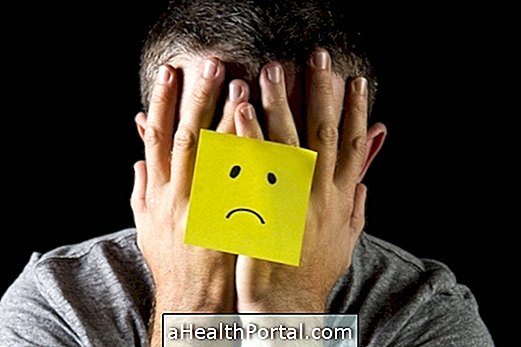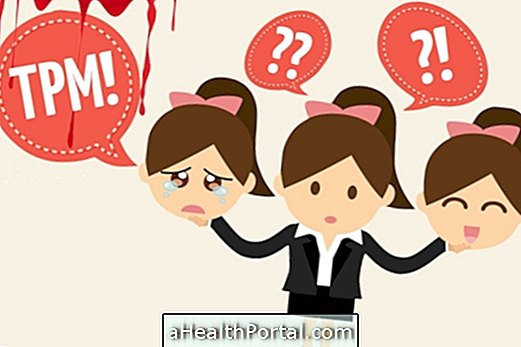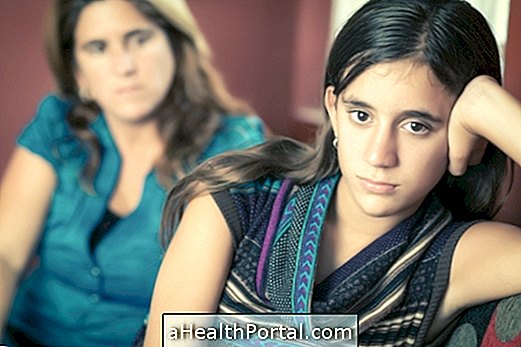Fear is a basic emotion that allows people and animals to avoid dangerous situations. However, when the fear is exaggerated, persistent and irrational, it is considered a phobia, causing a person to flee from the situation that caused it, causing unpleasant feelings like anxiety, muscle tension, tremor, flushing, pallor, sweating, tachycardia and panic.
There are several types of phobias that can be dealt with and treated with psychotherapy sessions or with the help of specific medications.
1. Tripophobia

Tripophobia, also known as fear of holes, occurs when you feel uneasiness, itching, tremors, tingling and repulsion in contact with objects or images that have irregular holes or patterns, such as honeycombs, clusters of holes in the skin, wood, plants or sponges, for example. In more severe cases, this contact can cause nausea, increased heartbeat, and even lead to a panic attack.
According to recent research, this is because people with tripophobia make an unconscious mental association between these patterns and a possible danger situation, and fear arises, more often than not, in patterns created by nature. The repulsion felt is due to the similarity of the appearance of the holes with worms that cause diseases in the skin, or with the skin of poisonous animals. See how the treatment of tripophobia is done.
2. Agoraphobia

Agoraphobia is characterized by fear of staying in open or closed spaces, using public transportation, staying in a queue or standing in the middle of a crowd, or even leaving home alone. In these situations, or when thinking about them, people with agoraphobia feel anxious, panic, or have other disabling or embarrassing symptoms.
The person who is afraid of these situations avoids them or faces them with much fear and anxiety, needing the presence of a company to support them without fear. In these cases, the person has a constant concern to suffer panic attacks, lose control in public or something happen to leave in danger. Learn more about agoraphobia.
This phobia should not be confused with social phobia, in which fear comes from the inability of the person to interact with others.
3. Social Phobia

Social phobia, or social anxiety disorder, is characterized by an exaggerated fear of interacting with other people, which can greatly condition social life and lead to depressive states. The person with social phobia feels very anxious in situations like eating in public places, going into crowded places, going to a party or a job interview, for example.
These people generally feel inferior, have low self-esteem, are afraid of being beaten or embarrassed by others, and have probably experienced traumatic experiences such as bullying, bullying, or pressure from parents or teachers.
The most common symptoms of social phobia are anxiety, increased heart rate, difficulty breathing, sweating, red face, shaky hands, dry mouth, difficulty speaking, stuttering and insecurity. In addition, the person is also very concerned about their performance or what they may think of it. Social phobia has a cure if treatment is properly done. Learn more about Social Anxiety Disorder.
4. Claustrophobia

Claustrophobia is a type of psychological disorder in which the person is afraid to be indoors, such as elevators, very crowded buses or small rooms, for example.
The causes of this phobia may be hereditary or associated with a traumatic episode in childhood, where the child was enclosed in a room or an elevator, for example.
People with claustrophobia believe that the space they are in is getting smaller, thus developing anxiety symptoms like excessive sweating, dry mouth and increased heart rate. Learn more about this type of phobia.
5. Arachnophobia

Arachnophobia, also known as spider fear, is one of the most common phobias, and it happens when the person has an exaggerated fear of being close to arachnids, causing them to lose control and may also experience dizziness, increased heart rate, chest pain, shortness of breath, tremors, excessive sweating, thoughts of death and feeling sick.
It is not known what the causes of arachnophobia are, but it is believed that this may be an evolutionary response, since the most poisonous spiders cause infections and diseases. Thus, fear of spiders is a kind of unconscious defense mechanism of the organism, not to be stung.
Thus, the causes of arachnophobia may be inherited, or be associated with fear of being bitten and dying, or seeing other people with the same behavior, or even due to traumatic experiences with spiders in the past.
6. Coulophobia

Cryphobia is characterized by an irrational fear of clowns, in which the person feels traumatized by his vision, or just imagining his image.
It is believed that the fear of clowns can begin in childhood, because children are very reactive to strangers, or due to an unpleasant episode that may have happened to clowns. Moreover, the mere fact of the unknown, of not knowing who is behind the mask causes fear and insecurity. Another cause of this phobia may be the way bad clowns are portrayed on television or in the movies, for example.
Although seen by many as a harmless joke, clowns provoke in people with coulophobia symptoms such as excessive sweating, nausea, fast heartbeat, rapid breathing, crying, screaming and irritation.
7. Acrophobia

Acrophobia or fear of heights consists of an exaggerated and irrational fear of high places such as bridges or balconies of tall buildings for example, especially when there is no protection.
This phobia can be triggered by a trauma experienced in the past, by exaggerated reactions by parents or grandparents whenever the child was in places with some height, or simply by instinct for survival.
In addition to the symptoms common to other types of phobia such as excessive sweating, tremors, shortness of breath and increased heart rate, the most common of these phobias are inability to rely on one's own equilibrium, constant attempts to cling to something, screams.










.jpg)













